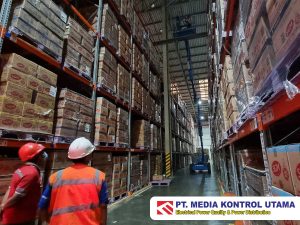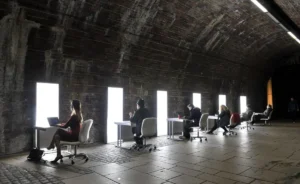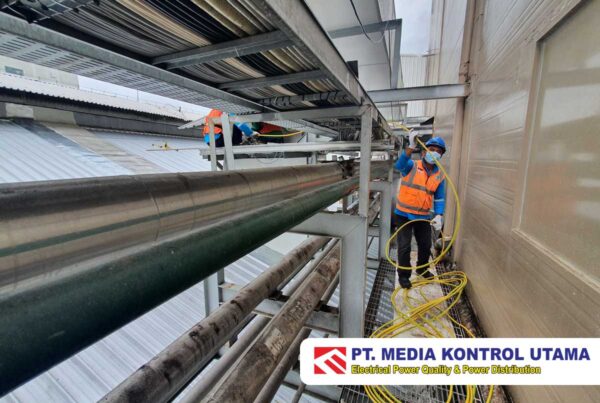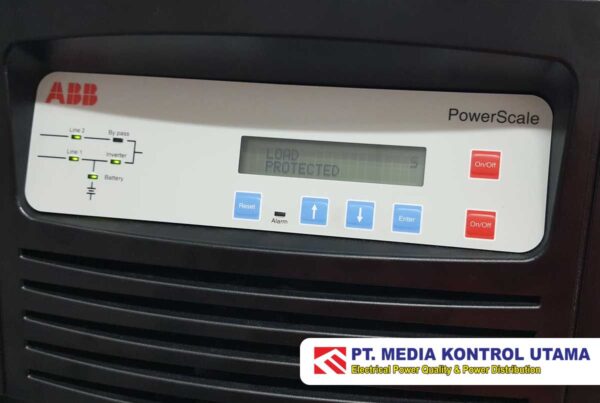Industrial lighting differs significantly from home lighting. It offers higher illumination, larger sizes, and more durable quality. 💡
Industrial lighting is used in warehouses, garages, factories, and other places with injury or accident risks. The safety and productivity of workers heavily rely on proper lighting. However, many people overlook the importance of having the right industrial lighting.
Poor lighting can negatively impact worker performance, leading to headaches, misjudgments, operational errors, or even injuries.
4 Key Benefits of Industrial Lighting

Industrial Lighting by PT Media Kontrol Utama
1. Enhances Visual Experience
Industrial settings vary greatly, from heavy equipment areas, product inspection, shipping and receiving, to warehouses. Workers operate in different locations, such as production workers who need to focus on packaging products. While human errors in packaging are common, proper lighting can minimize these errors.
2. Reduces Workplace Accidents
Production workers, machine operators, warehouse staff, and those performing heavy tasks face a risk of workplace accidents. Accidents often result from poor lighting, such as lights that are too dim or too bright.
The right industrial lighting provides adequate illumination and high quality, helping workers see people and objects clearly, thereby reducing the risk of accidents and injuries.
While proper lighting helps minimize accidents, workers should also prioritize their own safety and be aware of other risk factors.
3. Improves Work Environment
Appropriate industrial lighting enhances the work environment. It brightens the entire space and creates a more positive atmosphere for workers. Without the right lighting, a workplace can seem dull and uninviting, impacting worker focus and motivation.
A poor work environment can also affect psychological well-being. Correlated Color Temperature (CCT) is a key factor influencing psychology. CCT refers to the color tone of light sources, like Cool White or Warm White. Warm White (yellow) lighting can make workers feel more relaxed but may also dim the workspace.

Correlated Color Temperature (CCT) – Google Images
Workers may appear unhappy in a dull, dark environment. In contrast, a clean and well-lit workspace with appropriate industrial lighting shows respect for workers and motivates them to work harder.
Improving the work environment boosts productivity. Cool White light with a CCT of around 5000K is ideal for industrial settings.
4. Reduces Health Issues
Both insufficient and excessive lighting can cause health problems. Excessive lighting can strain workers’ eyes, while insufficient lighting can lead to fatigue.
Glare can cause visual fatigue and damage vision, as well as increase anxiety, lack of concentration, and other psychological discomforts. This can lead to insomnia, headaches, and worsen overall well-being.

Staples SAD Light Station – STAPLES
Inappropriate lighting with flicker effects can create a stroboscopic effect, which is dangerous for workers operating machinery. Machinery movements may appear slower or even stop due to this effect, leading to potential injuries.
Some workers may be more sensitive to higher-frequency flicker, leading to visual performance decline, eye strain, decreased motivation, headaches, dizziness, intellectual disruption, and more.
Comfortable and high-quality industrial lighting can reduce health issues, allowing workers to perform more efficiently and remain healthier.
Industrial lighting is crucial for your factory. Using the right lighting can apply the 4 benefits discussed above to your factory.
Contact Us
For expert consultation and repair services for your industrial lighting, reach out to PT Media Kontrol Utama. Our experienced professionals are ready to help you maintain the reliability and safety of your electrical distribution system.
Reference :
- Original Source – PT Media Kontrol Utama, “Industrial Lighting”, 2022.



